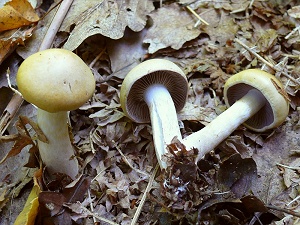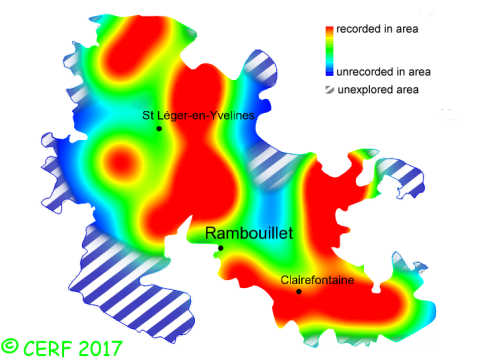| Cortinarius delibutus (Fr.:Fr.) Fr. |
|
|
|
|
|
|
The cap is pale yellow to golden yellow. The cap surface is smooth, viscid or sticky. The stem is white, washed with lilac or yellow, cylindrical to slightly swollen at base, with a ring zone (cortina remains). The flesh is white, with a tinge of yellow (cap) or lilac (young), unchanging; its taste is mild with sometimes a bitter cap surface; the odour is weak, of radish; its texture is fibrous. The gills are violaceous then cinnamon-brown, adnate, rather crowded . The spore print is rusty brown. This species is mycorrhizal. It grows on the ground, in deciduous or mixed woods, on a rather acid-damp soil, most of the time with birch, but also with beech, oak, mixed or broad-leaved trees or conifers. The fruiting period takes place from July to November.
Chemical tests : none. Distinctive features : Slimy yellow cap; lilac-blue gills turning brown when mature; slim stem, hardly viscid, clavate, white with violet stains towards apex and tinged yellow below the cortina Cortinarius delibutus is infrequent and widely present in the forest of Rambouillet, and is occasional, more generally speaking . | ||
|
page updated on 14/01/18

